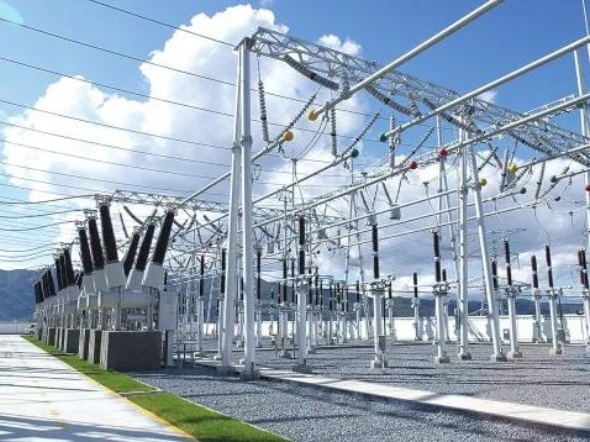The rapid development of long-distance transmission in the current power system has also led to a continuous increase in the number and distribution of substations. In order to ensure the safety of substation operation,GIS electrical equipment is used to control and protect the substation equipment. Due to the small space occupied by GIS electrical equipment and the low difficulty of transportation and maintenance, the materials used for the equipment are of high quality and the process is relatively good, so the probability of failure is not high. However, as a high-voltage combination switchgear, GIS electrical equipment is located in a high-voltage electrical equipment that is sealed inside a metal casing, so when a fault occurs, it is difficult to handle the fault. This requires maintenance personnel to understand some common faults in GIS equipment, in order to quickly determine the cause and type of faults, and shorten the troubleshooting time.

1、 Overview of GIS electrical equipment
As the control and protection equipment of the power system, GIS electrical equipment belongs to a fully enclosed combination electrical appliance, which uses gas as the insulation material, namely sulfur hexafluoride gas as the insulation and arc extinguishing medium, and relies on the principle of automatic arc extinguishing. It is equipped with a spring operating mechanism, which has strong breaking ability and high reliability, low operating power, and many components. Currently, GIS equipment surpasses other switchgear in production technology and application materials, with significant performance advantages and broad development space. At present, GIS equipment has accelerated its development towards intelligence and simplicity.
2、 Analysis of Common Faults in GIS electrical Equipment
(1) Fault classification
At present, GIS equipment faults are mainly caused by conventional operating mechanism faults and unique faults, and faults often occur in the early stages of formal operation, with conventional faults being more common. As conventional operating mechanisms, such as circuit breaker operating mechanisms, electric operating mechanisms, and electric spring operating mechanisms, these mechanisms often experience faults such as electric closing failure and large-scale power outages. The unique faults of GIS equipment mainly include SF6 gas leakage, high water content, and constitutive elements.
(2) Unique fault
Based on the differences in the environment, SF6 gas will generate more physical and chemical characteristics. When in a room temperature environment, SF6 gas will exhibit colorless, odorless, and non flammable characteristics, and its chemical properties will also be relatively stable in terms of chemical characteristics. But when the external pressure reaches 0. After 29MPa, the insulation performance and arc extinguishing ability of SF6 gas will be significantly improved, even reaching over 100% of that of air. When SF6 gas is affected by certain discharge and sparks, it can decompose into sulfur dioxide gas and hydrogen fluoride gas, which has strong toxicity and poses an unsafe hazard to workers. Moreover, the decomposed gas can cause significant irritation to the eyes and skin, and in severe cases, it can cause fainting and suffocation.
During the operation of GIS equipment, when faults occur in its internal components, they usually focus on switches, circuit breakers, and transformers. In particular, the frequency of faults in the pot insulators and isolation switches accounts for a large proportion of the total faults. Therefore, specific detection work needs to be done in the actual operation and maintenance process, and the pot insulators and isolation switches should be the focus of the detection work.
(3) Fault Cause Analysis
When analyzing the causes of faults in GIS equipment, it is necessary to start from four aspects: design, production, installation, and operation, in order to clarify the causes of the faults. The failures that occur in the design process are often due to a lack of scientific selection of the design structure or component insulation margin. For insulators, when the design of the field strength parameters used lacks scientific validity
Easy to malfunction. Usually, it is necessary to control the field strength of the insulator within a range of no more than 6kV/mm. Once this value is exceeded, the insulator is prone to flashover discharge during long-term operation, and in severe cases, it may even be broken down. When analyzing the overall faults of GIS electrical equipment, the main stage of fault occurrence and control is the production process. By strictly following the design principles and using high-quality materials, the accuracy and standardization of the production process can be ensured, which can effectively control the GIS equipment in the production process. During the assembly stage of GIS equipment, it is necessary to ensure the neatness of the parts and carry out the assembly correctly. Coordination and cooperation should be carried out throughout the entire assembly process, and violations should not occur. In addition, the workshop should ensure good hygiene and cleanliness, which can effectively prevent impurities such as metal particles from entering the interior of GIS electrical equipment and avoid causing malfunctions. During the official operation of GIS equipment, there may be some violations or other external factors that may cause grounding switch short circuits, leading to the occurrence of faults. Therefore, maintenance and management must be carried out in accordance with existing operating procedures and requirements, and equipment protection must also be done well.
3、 Handling Measures for Common Faults in GIS electrical equipment
(1) Timely handling measures: To prevent SF6 gas leakage, ventilation openings should be set up at the bottom of the room in advance, and corresponding alarm devices should also be installed. If there is a leakage of SF6 gas, it is necessary to open the vent for ventilation and issue an alarm to prevent the gas from spreading to the main control room. During this process, it is important to note that personnel are not allowed to enter without permission before the gas has been completely discharged. Normally, after SF6 gas leakage occurs, a discharge time of more than 20 minutes is required, and personnel are allowed to enter only after the indoor oxygen content meets the standard. Secondly, if SF6 gas in the water content of the body is above a certain value, it is necessary to filter and dry the gas through a gas treatment vehicle. Furthermore, if an internal discharge fault occurs, it is necessary to increase the quality control of GIS electrical equipment materials, while also ensuring the cleanliness and hygiene of all components. Finally, if there is a fault with the isolation switch, there are generally two ways to proceed. On the one hand, do a good job in design work to prevent malfunctions caused by unscientific structural design. On the other hand, do a good job in temperature detection and timely operation of the isolation switch, and also pay attention to timely replacement of components to avoid faults caused by aging of the switch.
(2) Daily maintenance and management
Doing a good job in daily maintenance of equipment is very important for ensuring stable and reliable operation of the equipment. Therefore, substation staff and professional technical personnel should strengthen the daily maintenance and regular maintenance of GIS equipment, focus on monitoring the parts that are prone to problems, and promptly handle any problems found. In general, GIS electrical equipment should undergo minor repairs every 3-5 days to
Major repairs are carried out every 8-10 years to ensure the reliability and stability of its operation. Faults in GIS electrical equipment usually occur in the early stages of official operation, so maintenance, inspection, and repair work should be done well during this period. The inspection and maintenance work of this equipment usually involves:
Firstly, check the key component indicators and locking positions to see if there are any abnormalities in contact with the contacts; The second is whether various indicator lights and detection instruments can work; Thirdly, is there any gas leakage in the GIS equipment and should the insulation be replaced. These faults can be more intuitively detected with the help of the eyes, and in addition, it is necessary to do a good job in detecting and cleaning the moisture content, air particles, and other contents of GIS electrical equipment. GIS electrical equipment maintenance mainly includes two types, one is minor maintenance, and the other is major maintenance. Among them, the cycle of the former is usually three to five years, and the scope is mainly limited to the calibration of pressure gauges and thermometers, as well as the replacement of aging components and adsorbents. The cycle of the latter is usually eight to ten years, and within
It involves the replacement of worn parts, insulation components, and plugs, as well as the cleaning of SF6 gas decomposition products and various particles in the GIS room.
4、 Conclusion
Due to the unique nature of GIS electrical equipment, in its good airtightness, it is difficult to carry out specific maintenance in case of GIS equipment failure. This requires in practical work, relevant personnel need to choose suitable equipment materials, strengthen supervision of equipment assembly work and on-site debugging work, conduct quality checks for each link, comprehensively improve the insulation performance of GIS electrical equipment, ensure the quality of GIS equipment materials, further optimize the production process of GIS equipment, protect the installation environment with good cleanliness and dryness, and conduct voltage withstand tests on SF6 in advance, To ensure the quality of GIS equipment and lay a solid foundation for the safe and stable operation of the power system.
From the content shared above, it can be seen that the complexity of GIS equipment maintenance, coupled with the strict environmental protection requirements of various countries, has led to an increasing number of power companies choosing to use AIS electrical equipment.
Meanwhile, if you have any questions about your GIS electrical equipment in your power system, our experienced technical experts are able to help you to analyze the root cuase and its solution.
